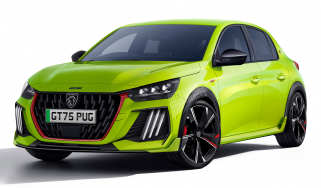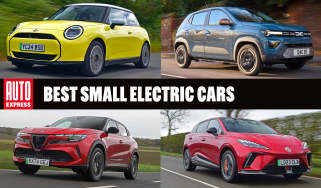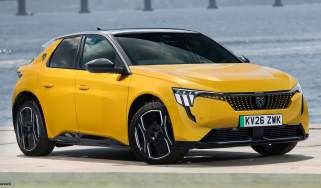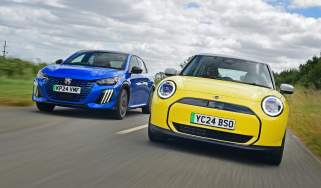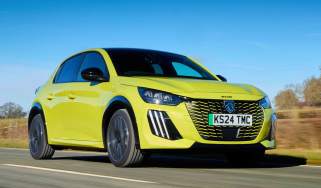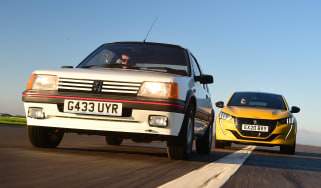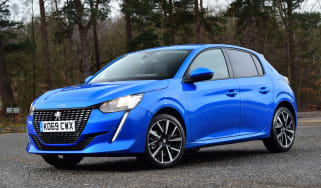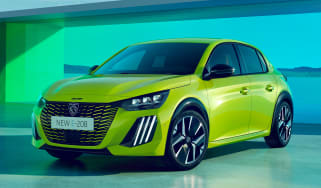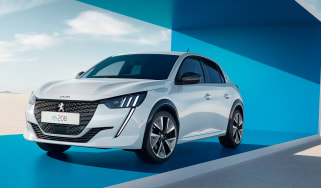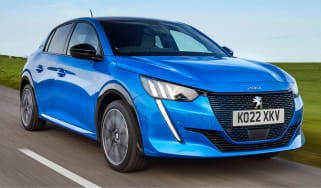Peugeot 208 review
The Peugeot 208 has eye-catching looks and is pleasant to drive, but rivals are more practical and offer better value

Quick verdict
Small cars like the Peugeot 208 are synonymous with the brand and the French nation. The latest version sports sharp looks inside and out, carved out from the similarly sporty appearances of other contemporary Peugeots. This helps the 208 stand out in the crowded supermini market. It also rides well, so there is some substance to go with that style.
The latest 208 isn't perfect – interior space is a little compromised in the rear, and it doesn’t have the biggest boot in the class. It’s also more expensive than some of its key rivals, but the 208 does offer buyers a decent level of choice, with three trim levels and a spread of petrol and mild-hybrid engines, plus a couple of electric versions, too.
Peugeot 208: price, specs and rivals
Peugeot has some terrific small cars in its back catalogue, most notably the Peugeot 205, a huge success across Europe in the 1980s and ‘90s. The company went off the boil a bit thereafter, and although it’s produced respectable numbers of subsequent cars, nothing has hit the spot in quite the same way. Part of the problem has been a lack of design flair, which Peugeot has done a lot to address in recent years.
Used - available now
The focus on style really came to the fore in 2016 when Peugeot introduced the second-generation 3008 SUV, which effectively redefined its design language. Follow-up models have included the glamorous 508 fastback and the fashionable 2008 compact SUV, both of which have won plaudits for their style, upmarket feel and pleasant driving characteristics.
But it’s the supermini sector where Peugeot really had to get serious. It’s a core battleground for the French marque and one of the toughest around, with a range of excellent rivals that include the Skoda Fabia, Volkswagen Polo, Renault Clio and, with the electric E-208, the premium MINI Cooper. Peugeot knew it had a fight on its hands, and to its credit, the latest 208 has the chops to take the fight to all of them.
Mixing with the best is one thing, but beating them is another, and it’s a big ask for Peugeot to return from the fight as a champion. Peugeot needed to ensure that comfort and refinement, decent driving dynamics, strong efficiency and plenty of technology were all present in the 208 if it truly wanted to shake up the supermini sector, and in many respects, it has succeeded.
Not only does the Peugeot 208 still have a traditional petrol engine option, but it is following the trend for electrification across the whole car industry by offering a couple of mild-hybrid engine options with increased fuel efficiency. Plus, there are a pair of all-electric choices for those looking to forgo fossil fuels completely with their next supermini.
Buyers still have a choice of three trim levels: entry-level Active, mid-range Allure, and range-topping GT. Every model includes LED head- and daytime running lights, rear parking sensors, a 10-inch central touchscreen with Apple CarPlay and Android Auto, and Peugeot's i-Cockpit dashboard setup.
As for propulsion, the petrol range is built around the venerable 1.2-litre PureTech three-cylinder engine. The basic, non-turbocharged 74bhp version might be ideal for urban driving, while the more potent 99bhp turbocharged version should be able to cope with the odd motorway.
Two mild-hybrid versions, 99bhp and 134bhp, come exclusively with a six-speed, dual-clutch automatic transmission. The most efficient of these mild-hybrid models effectively makes having a diesel redundant, so it’s hardly surprising that the unpopular 1.5-litre BlueHDi diesel engine the 208 once had has been discontinued.
If you’re looking into the Peugeot 208, there’s a strong chance that the pure-electric version of the car has piqued your interest. The least powerful E-208 offers a range of up to 225 miles from a 50kWh (46.3kWh useable) battery. There’s also a larger capacity, 51kWh (48.1kWh usable) battery and more powerful electric motor, boosting the small electric car’s official range to 248 miles.
Pricing for the petrol range starts from just under £21,000, rising to a touch below £26,000. The mild-hybrid kicks off at around £24,000 and goes up to nearly £29,000, putting the 208 firmly in the premium area of the market against rivals like the Audi A1 and MINI Cooper. Opting for the electric model will set you back more, with prices starting at just over £28,000, rising nearly £33,000 for the top-of-the-range GT with the biggest battery capacity.
Used and nearly new
The timeline of the Peugeot 208 begins back in 2012, and covers two generations at the time of writing. Both models have affordable running costs to their name, and prices have been kept in check by their popularity, although the 208 Mk2’s improvements over the Mk1 model in areas like interior quality and equipment make it a more desirable and, therefore, more expensive buy. There have been some reliability concerns in the past with the MK1 208, and the current MK2 certainly isn’t proving to be as dependable as rivals such as the Honda Jazz or Toyota Yaris.
Peugeot 208 history
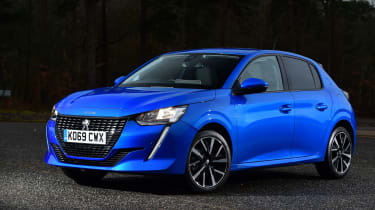
Peugeot 208 Mk2: 2019-present
Rather than naming its new-gen supermini the 209, Peugeot decided to instead do a second generation of 208. The similarities go beyond the name, too: like its predecessor, the 208 Mk2 has a distinctive design and a broad selection of engines – including an array of petrols, a frugal diesel and for the first time on the Peugeot 208, a fully electric option. Unlike the 208 Mk1, the Peugeot 208 Mk2 is only available as a five-door hatchback, and the second-gen 208’s more premium billing meant it was a bit more expensive than the first-gen model.
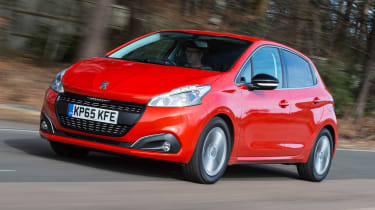
Peugeot 208 Mk1: 2012-2019
The Mk1 208 was a capable all-round supermini when new, and was a noticeable improvement over its predecessor, the Peugeot 207. Despite being shorter than the 207, the Peugeot 208 Mk1 was actually a bit roomier for passengers, and the car looked quite stylish inside and out. All Peugeot 208 Mk1s came with the more minimalist i-Cockpit dashboard design that debuted on this model, and most versions were well equipped, though bear in mind entry-level cars didn’t get a touchscreen display or Apple CarPlay and Android Auto smartphone connectivity. Read our full Mk1 Peugeot 208 buyer’s guide here…
Frequently Asked Questions
The Peugeot 208 is a good-looking car, and the petrol and mild-hybrid options will be economical. It’s also good to get an electric alternative, which is impressive in a shrinking supermini market. It is pricey, though, and not particularly spacious inside.











